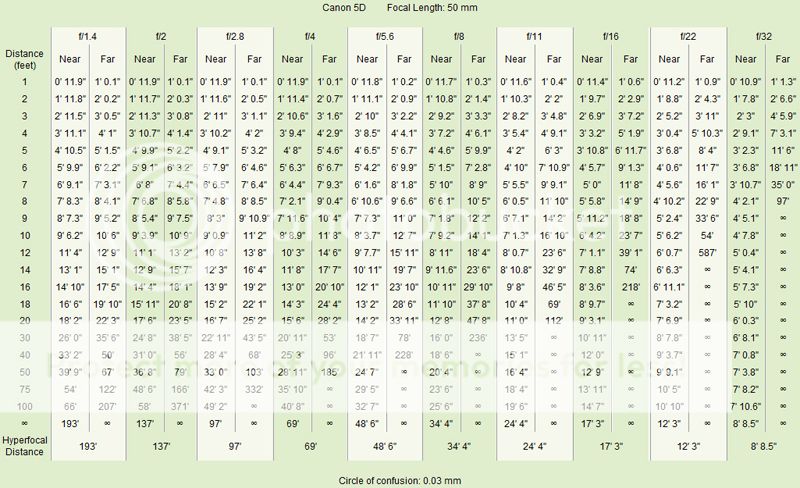Found this confusing at first as after you say to focus on the object that's HFD set I thought to myself no it's not, but then you went on to say you then need to choose the aperture for that distance, obviously only then does step 2 become the HFD. Helps if I read it all first lol.
I actually do it differently to this, I choose my focal length and aperture first and then use a calculator/chart to work out the HFD. As I'm generally using between 18-24mm I know that near distance is very small so all the foreground is sharp. Same result, different method

Haha, I see what you mean, but actually HFD is set at stage 2) for that
subject, regardless of lens or aperture, because HFD is always exactly double the distance of the nearest object you want sharp, regardless of anything else. But yes, you then have to select the right aperture to bring everything into focus at the focal length you're using. And it doesn't matter in what order you do these things.
For anyone interested, these are the numbers I have inside the lens cap of my 17-40mm lens (on full-frame*) used for shooting landscapes. It's easy enough to guess any in-between settings as while the numbers in DoF tables looks very precise (they have to be, to make the maths work) this is actually not a very critical process. Depth-of-field doesn't suddenly go from sharp to blurred, it's very gradual, and if you're a couple of feet out it probably won't make any visible difference.
..................f5.6........f11........f22
17mm.......5.6ft......2.8ft.......1.4ft
24mm.......1.2ft......5.7ft.......2.9ft
35mm........24ft.......12ft..........6ft
The other thing I do, if the situation allows, is choose an f/number one stop higher than the table suggests (though it's best to avoid the highest f/numbers to minimise softening from diffraction). This will more than cover any errors, but more to the point the sharpness standards for DoF were drawn up many moons ago when we were all shooting film and a 10x8in print was regarded as a big enlargement. In other words, they're pretty loose and you will get better sharpness at the close and far distances by stopping down a bit more. Oh, and BTW, if you crop an image, more than just a trim, that is effectively a change of sensor format and it changes the DoF!
*Choose the ones you want for your camera/lens from
www.dofmaster.com




